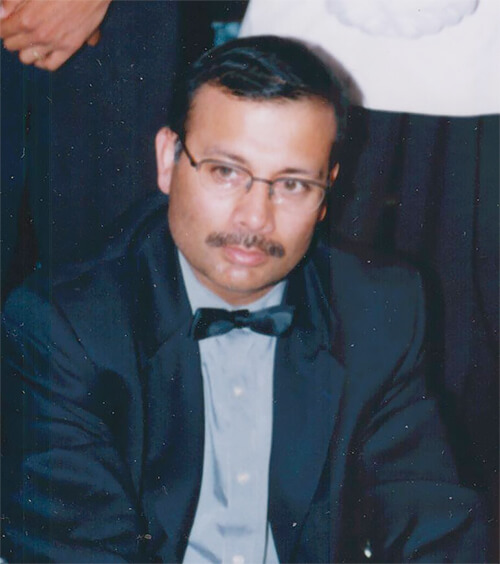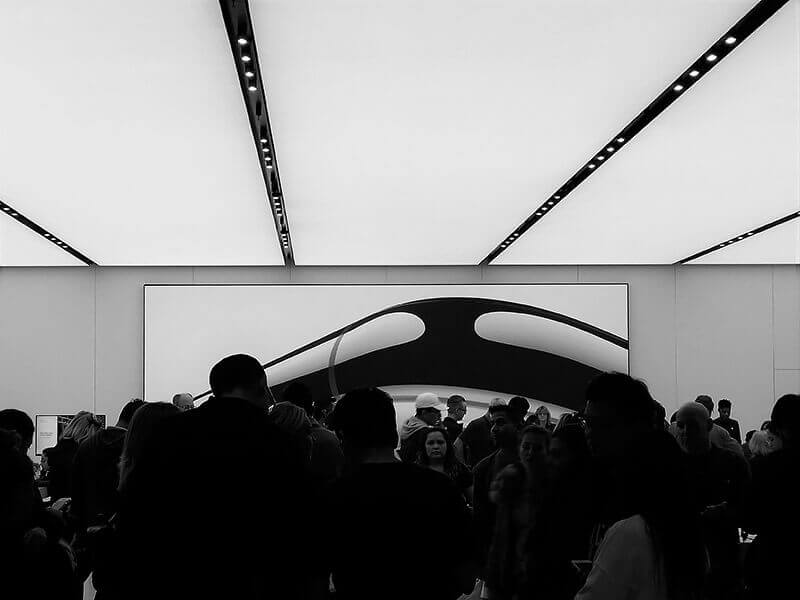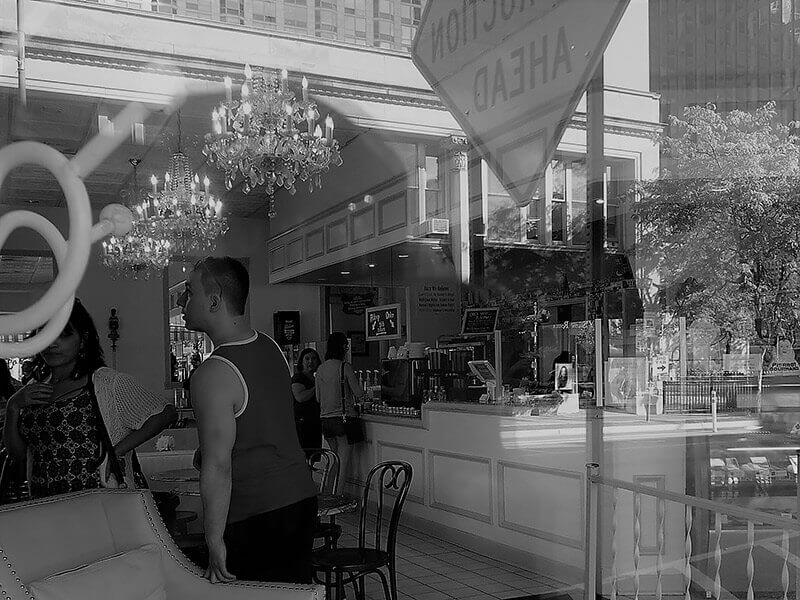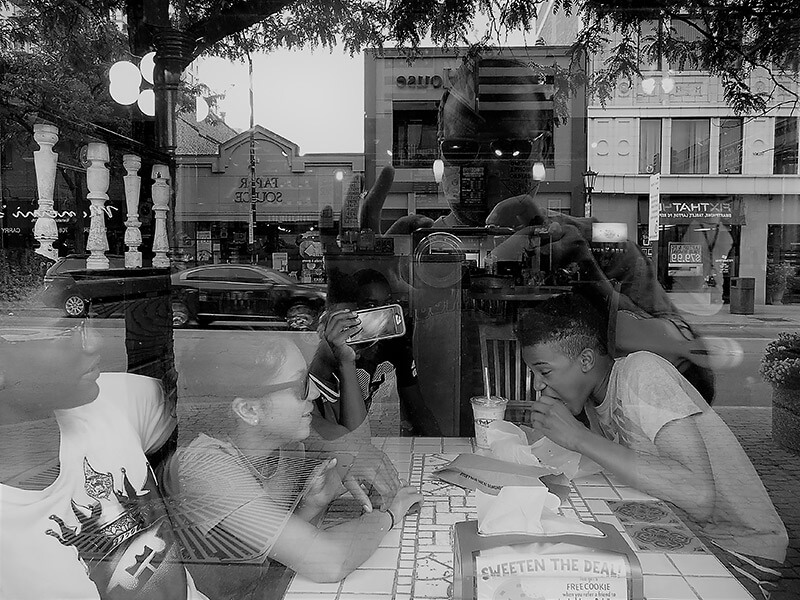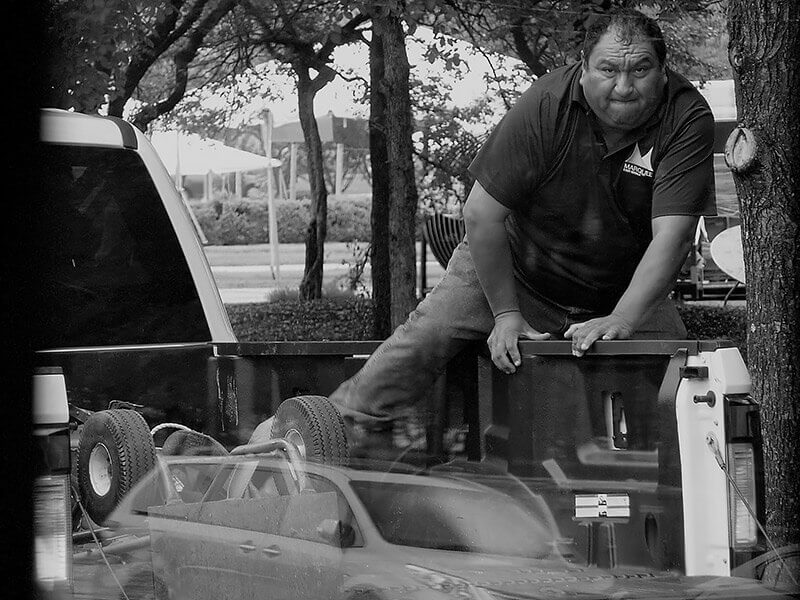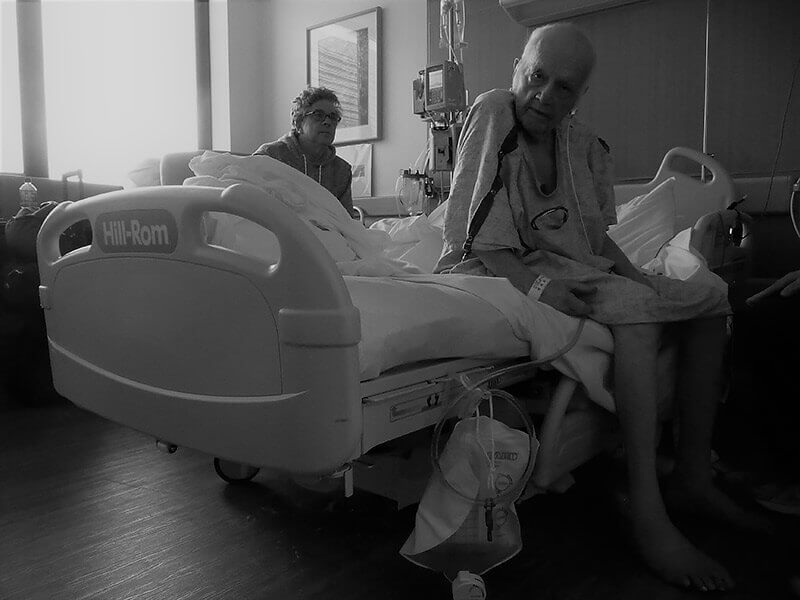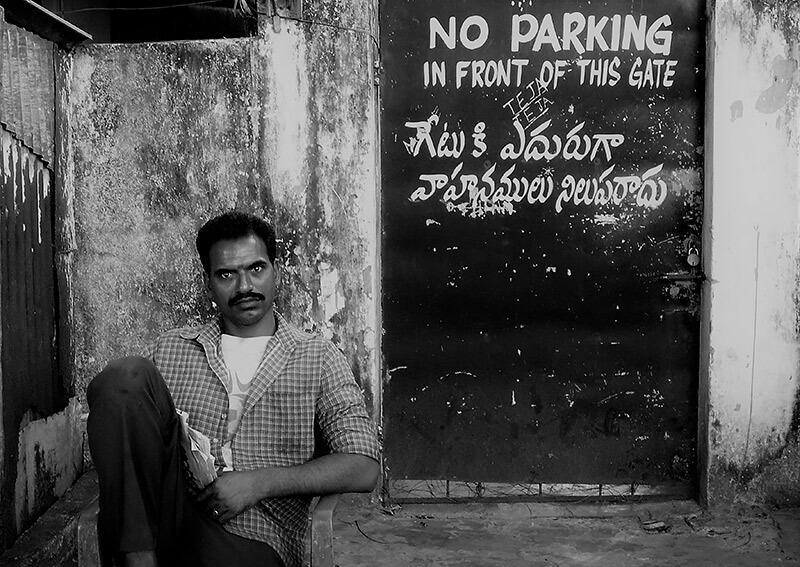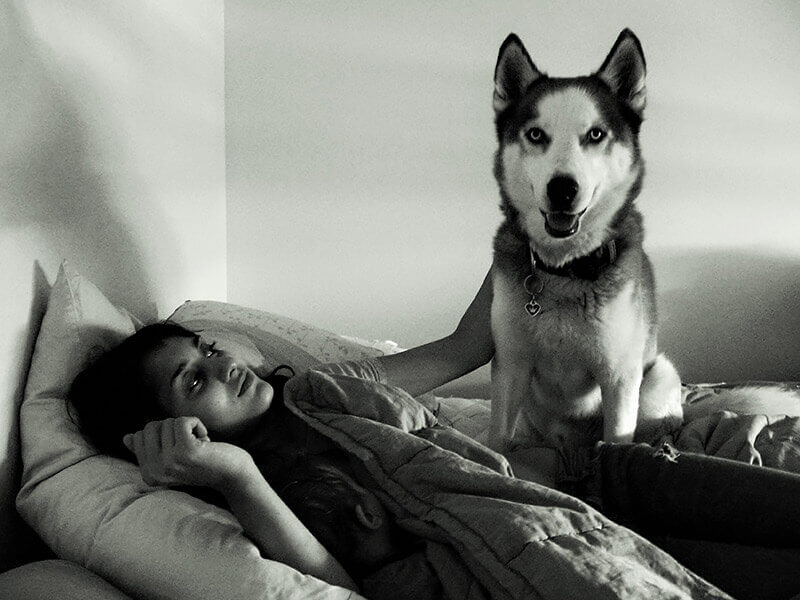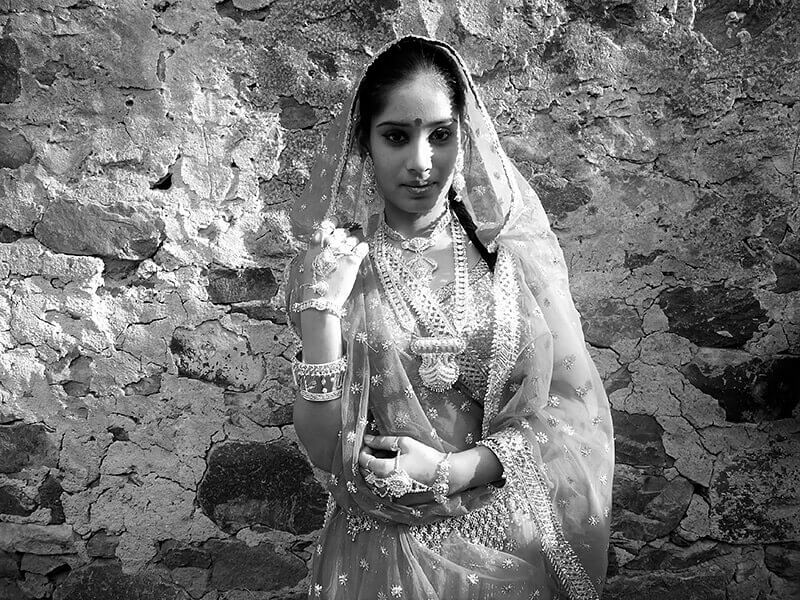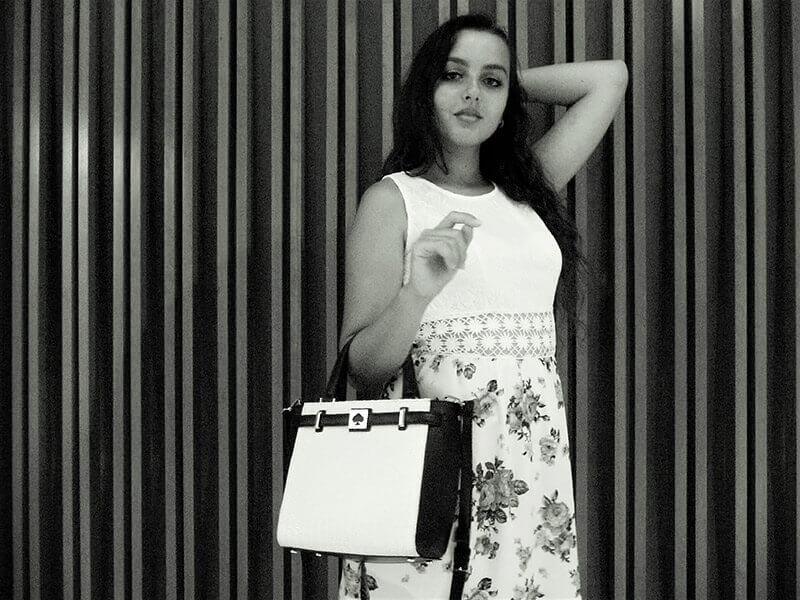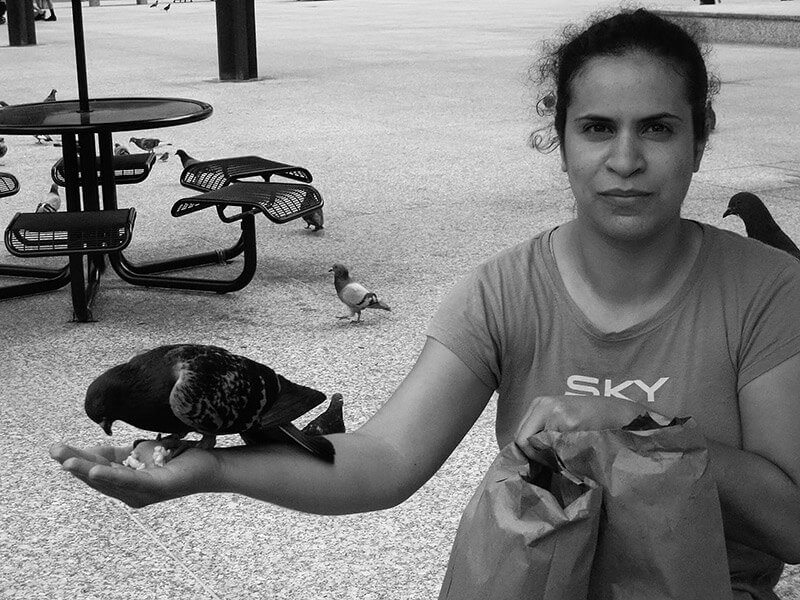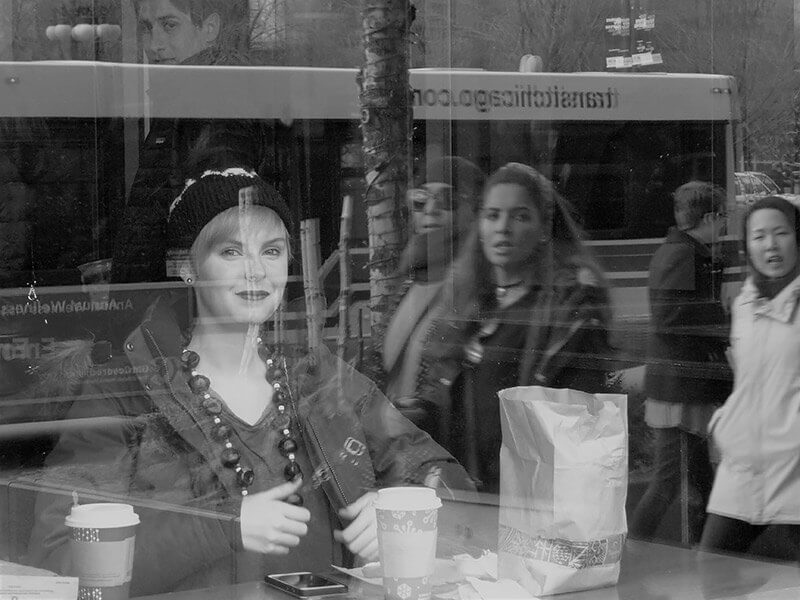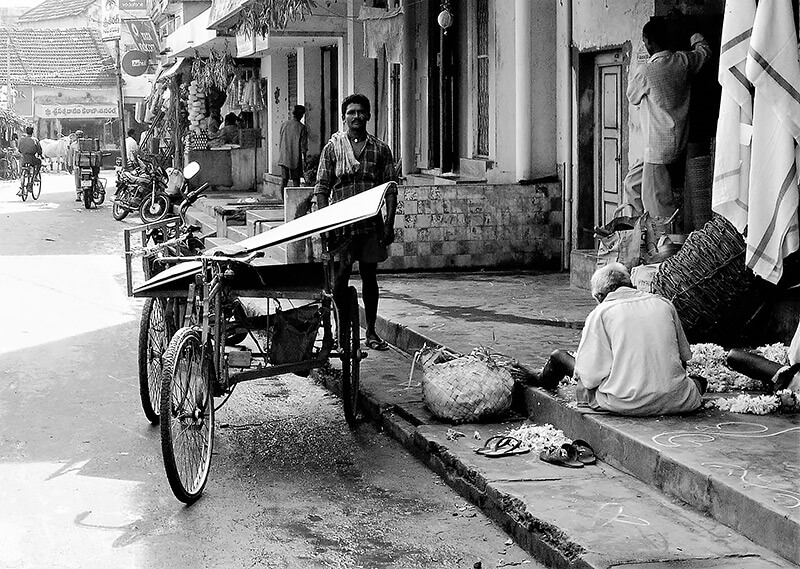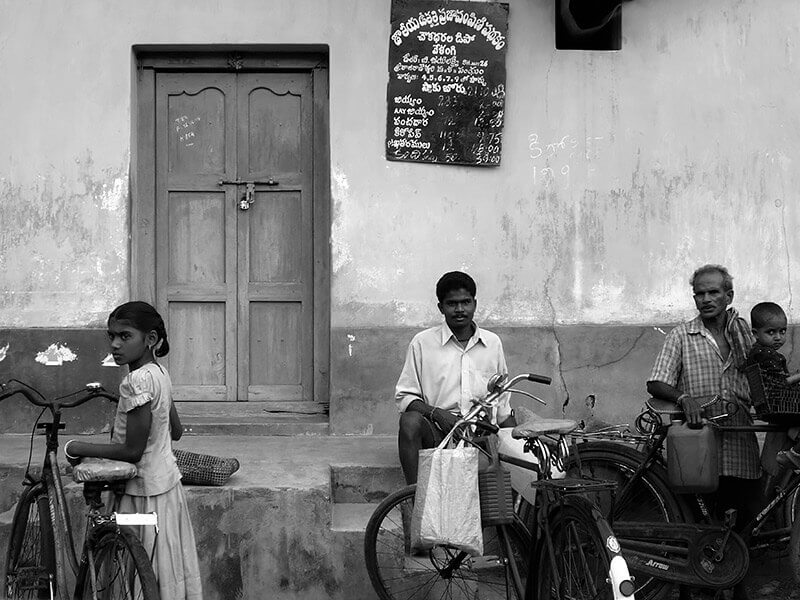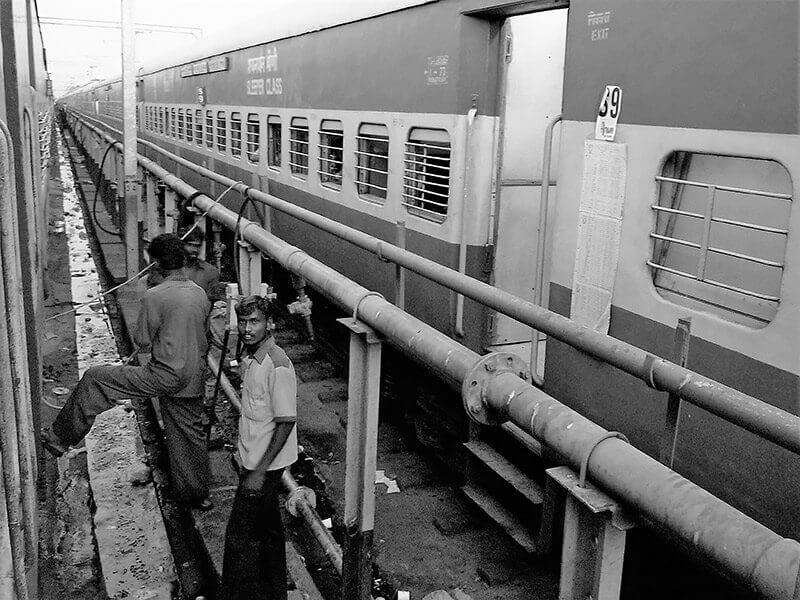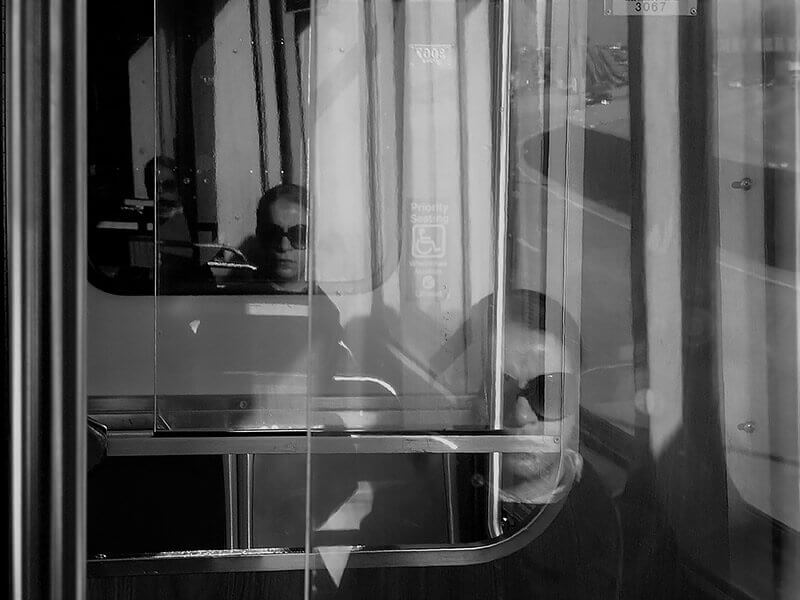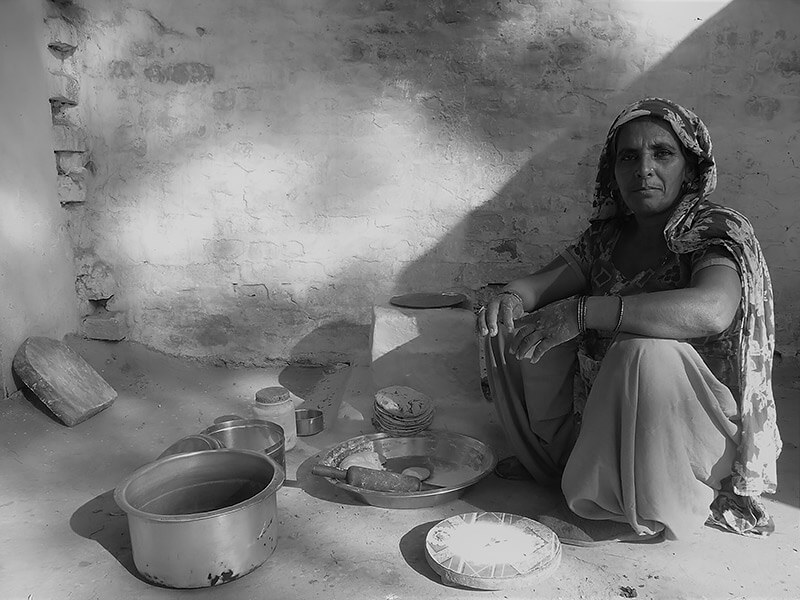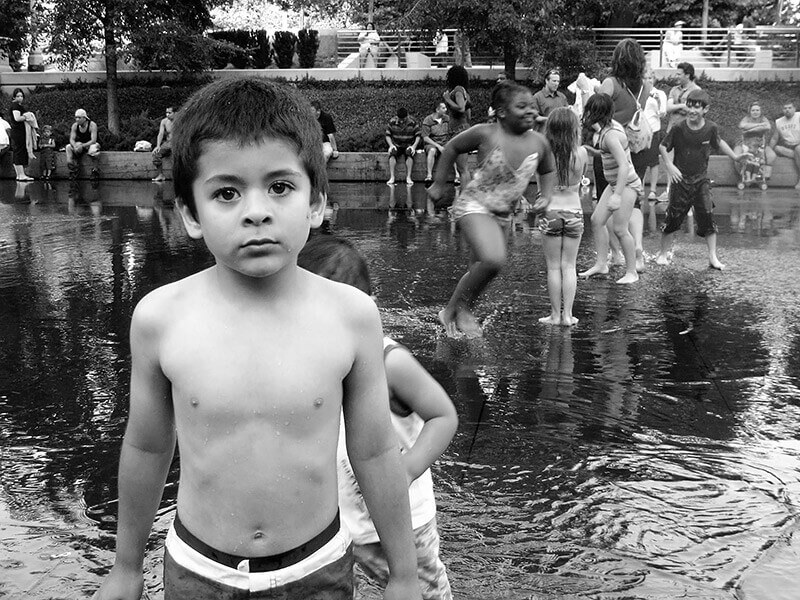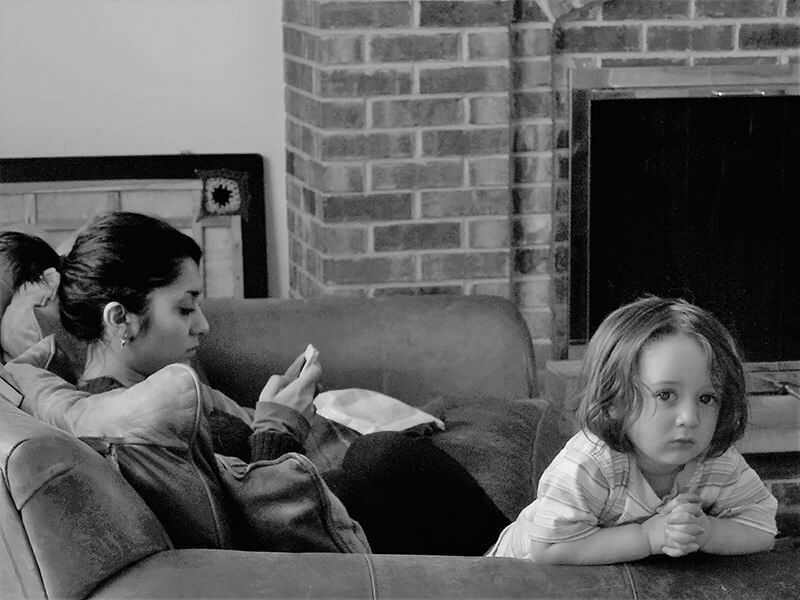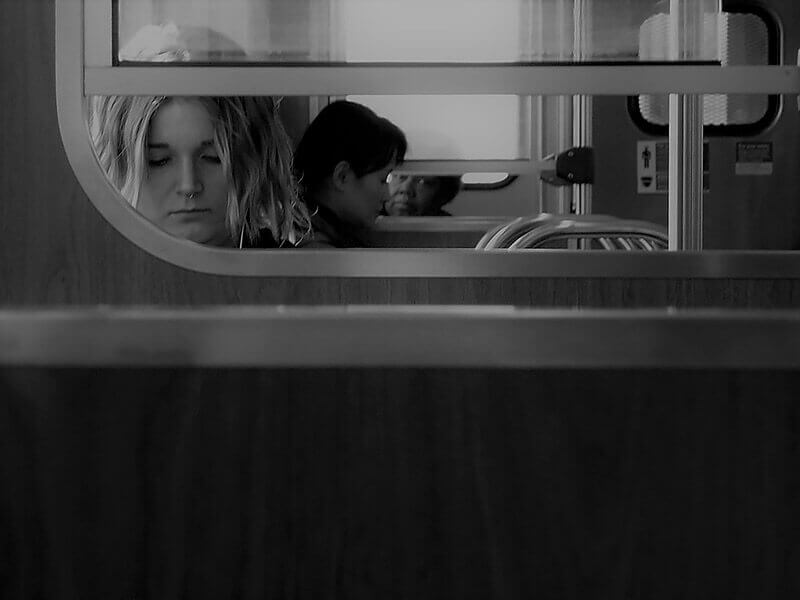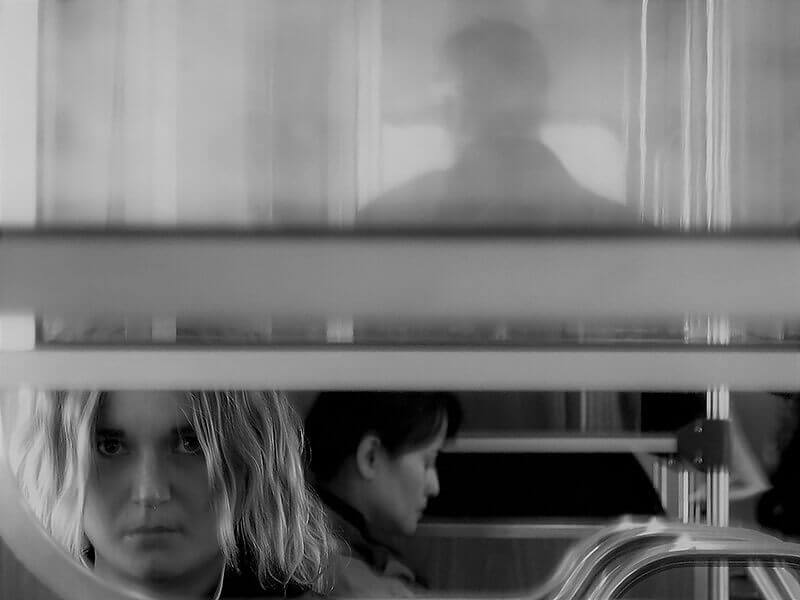...a tour of the senses does not logically proceed from vision to hearing to smell, taste and touch, but rather from stimulus to sensation to perception.
-- John Henshaw, 'A Tour of the Senses'
Physical contact with an individual, could mean aggression or affection. Eye contact, on the other hand, could mean any number of things. Make eye contact with an animal, it's territorial fight; with a human, it's labyrinthine: 'You are funny, but I won't sleep with you! You asshole – I love you! Eyes express what the brain perceives and the body is aware of.
-- Raju Peddada, May 31, 2018, 8.00 pm
One day in May, not long ago, I pulled my car aside, parking on Columbus Drive, in Chicago, a few meters from my old haunts, The Art Institute, to make a call. As I sat in the car facing south, getting ready to dial the number, two trucks, came into my peripheral vision on the right, like white blobs, moving slowly atop the sidewalk. When I turned my head to look at them, I realized their mission: install tents for the Taste of Chicago festival, that happened every June. One of the two trucks, parked on the far side of two old trees that allowed me a very narrow view of the truck bed, almost fifty meters away – and this field of vision between the trees was no more than an inch between my thumb and the index finger. I never imagined that it would yield anything interesting – so I dialed my number and waited to get connected.
Then, in my conversation, I sensed something and happened to look up. I saw this fuzzy blue mound of a man, with a watermelon head, without a neck, that sat on his shoulders, in that sliver of a view, trying to clamber into his truck bed. I dropped the call like a hot potato, and grabbed my camera. When I pulled him closer with the lens, his huge Aztec face, dominated by the nose, had a murderous grimace of exertion, trying to pull his weight in to the truck bed. I released my shutter several times, feeling very secure in that bubble of distance, and the unlikelihood of ever being detected through that narrow field of view. Never for once, had I thought that he would, but he did – make eye contact. Suddenly, I was a spy, caught red handed! Chills crawled down up my spine, I felt unnerved. Many days later, when I uploaded the photographs onto my laptop, especially, this photograph, I was stupefied at how he has sensed me through that narrow view, from about a hundred-fifty feet.
I then discovered something that I would refer to as 'onomatopoetic serendipity' – the photograph itself had provided its own caption: Brute – this word was on the bin, he was trying to move. It was like watching a character being undressed, through a keyhole. And, the guilt was mine, as I was caught recording a strange man in his most obligatory and humbling condition: physical work – without his permission. His eyes conveyed my guilt, unequivocally. I had violated him, in his most menial state: work. What was wondrous was that a set of eyes, not more than 3-4 inches apart set on the face, could pierce our peace, our equilibrium, from afar, when we were least expecting it. Some how we feel them, inducing us to make that contact. By what mechanism does this happen? Would the study of our senses would yield some answers?
I wondered how I became aware of the man in the narrow field of vision. How does one become aware and alert to such things? Was it photographer's instinct, or something that has its basis in neural science? In his remarkable book, A Tour of the Senses, John Henshaw explicates our incredibly under-appreciated sense organ, ...the Vestibular System, a miraculous little set of devices housed inside the skull that sense the motion of the body, and in particular, the head; this system enables us to balance ourselves. This internal balance is referred to as proprioception: the unconscious perception of movement and spatial orientation arising from stimuli within the body itself – which is the mechanical sense of location and motion of the body – we respond better to other bodies in motion, when we are optimally balanced – a complex neural process.
The brain is about 2% of our body weight, yet it consumes 20% of all the energy the body combusts – and, it would consume more energy, if the eyes were able to transmit information as a denser rate. Even at the present rate, the eyes process enough data, especially, in the periphery as mere impressions, alerting us to a variety of conditions, static and kinetic. A photographer, gifted with ESP (extra-sensory-perception), and an OP (optimal proprioception), could receive signals on someone's condition, in the fringes of his mind-sight – which would draw rapid attention to a possible situation. In fact, ESP and OP form a vigorous aspect of intelligence training, but, it's a debate as to whether it can be taught to a student or only the gifted ones, who are nurtured along. Without proprioception we are disabled. It's a severe handicap, loss of bodily awareness is even more than blindness. Is it surprising that this ESP-OP tandem, is the very combination that catalyzes our thermogenic creativity – visual acuity?
Our proprioception and perception: a complex psychological blend of the past experience influencing what's happening now is referred to as remembering the present are two faculties that act as our internal spectrometer, like the one NASA used in its Kepler project to detect habitable planets in solar systems light years away. How was this done? Well, they focus on a star and look for light fluctuations caused by an orbiting planet – that minute fluctuation in a constant spectrum of light being emitted revealed that the said sun or star had planet or planets orbiting it – like our own solar system. Similarly, when a constant source of light to our mind-sight periphery is disrupted, it makes us lift our heads up to see what had caused this – that is when we become, as a photographer, aware of all the possibilities – especially, our human condition. Remember that Puddle jumper by Henri Cartier-Bresson? He knew the subject's intention, well before he took the leap, and was ready for it!
Eye contacts are the consequence of sensing, singular in nature, distinct as finger prints, but patterns remain the same. They reveal a variety of psychological conditions to the perceptive. You can see happiness or struggle, affluence or indigence, you can sense openness or secrecy, hostility or amity. To use the cliche, eyes are the windows to our inner beings. What we feel, we show – it takes an enormous amount of training to disallow our eyes from revealing much – however, they do betray us. Writers, quite often, rhetorically, stress that if they influenced, connected or resonated even with one reader, they'd consider it a success. Well, in photographic vernacular, like a writer, if you can make eye contact with only one in large crowd, you have captured a metaphor.
In the last decade, I have developed my own guidelines, my proprietary template, on what makes a photograph of several people (gathering or a crowd) aesthetically sound, in terms of composition, eye contact, the anchor and face-display, the last factors being of crucial significance. The face-display by itself has several photographic facets: A. Back of the head; B. profile; C. three-quarters view; D. frontal view – the last three being critical to my template. In small groups of people, from five to ten individuals, 50% or more should be caught in B-C-D positions in relation to the lens. In other words, 50% or more should be in full frontal (not looking at the camera) three-quarters or profile views – this makes for a well balanced photograph.
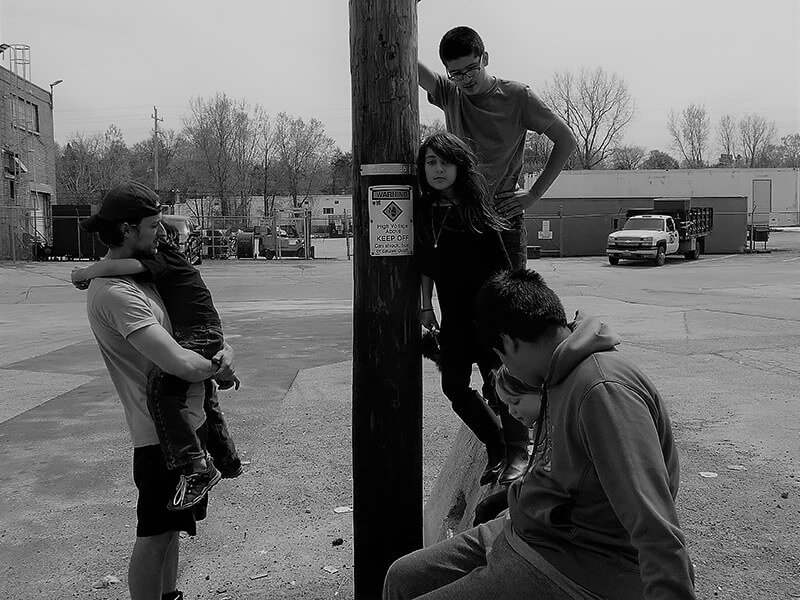
It's an interesting dynamic – a photograph of a gathering, a large crowd, without an eye contact is just bromide. But then, it takes only one entity's eye contact in a room full of bobbing heads to turn that photograph into a statement, a metaphor: I'm alone in a crowd! and any number of other things, as in photographs numbered 5 and 6, at the Apple showrooms. Now, some photographs are aesthetically charged ambiguous palimpsests, appealing to our senses, especially, beauty, like numbers 21 and 22, even with the eye contact. Others, like 12,13, and 13A are epigrammatic, as: The inured and the inevitable, that intrigue our intellect, more than our sense of beauty. Take the photographs 1 and 2, taken on a commuter train – the eye contact in 1 represents curiosity, Why?, while in 2 the subject seems to accuse me of violating her privacy, How dare you? A look at 3 and 4 that I refer to as Watchdogs reveal, astonishingly, the same fierce protective mien across two different species. 8 And 8A are titled as the Virgin and the Vixen, both telegraph diabolical sexuality, Come, get me!
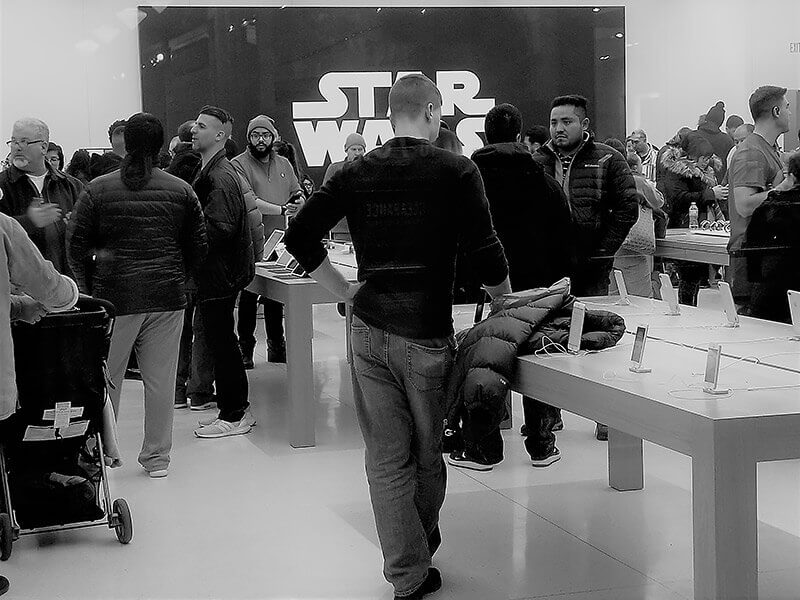
Photograph number 10 is loaded with inferences, one being: We are happy in our patrician cells!, The enigmatic smile in 11, seems to repress the carnivore inside. Photographs 9-14-15-16 were taken from moving a car and a train – I often wondered if I could ever locate them to find out how their lives had unfolded. There is a profound sense of longing, when I look at some people in these photographs – a sense intensified by a desire and speculation of whether one of them, like the woman in 9, could have been my friend, a soul mate, perhaps. Photograph No. 17 has three reflections of the same person, but, the middle reflection seemed to be angled towards me, with eye contact, that seems to bark, What do you want? Take number 7, her eyes reflect the pride she has in her family. My boys, in numbers 19 and 20 represent that profound innocence and its infinite possibilities.
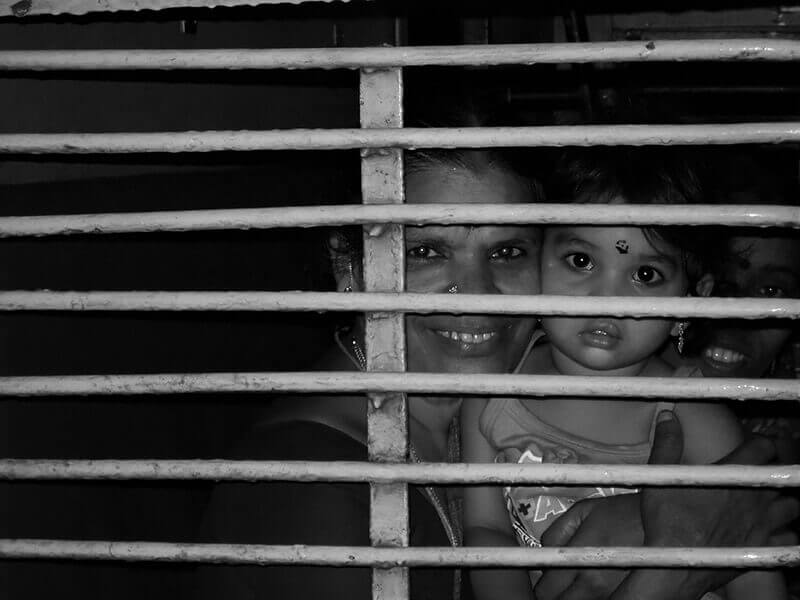
Eyes, are the threshold to our mind, and indeed, present infinite variables! Our eyes may look static, but, they never are, they are always moving, as screens of information, and as the streams of our conscience, that can be perceived from afar and even with no contact. This exploration was infinitely entertaining, especially, as the accidental narrative on how all our stories are essentially the same.
Copyright © Raju Peddada – All text and photograph Rights Reserved.
